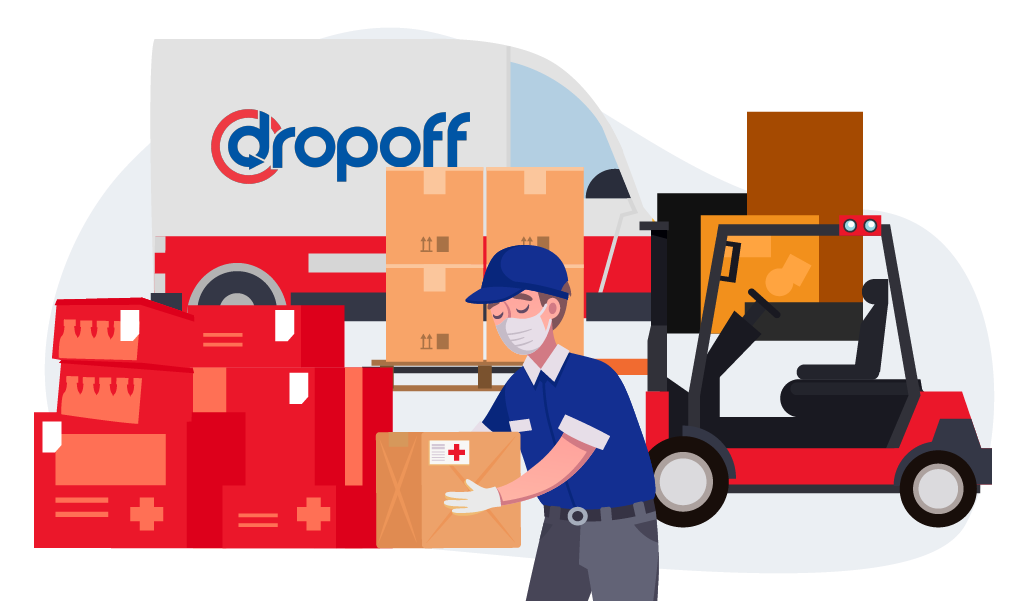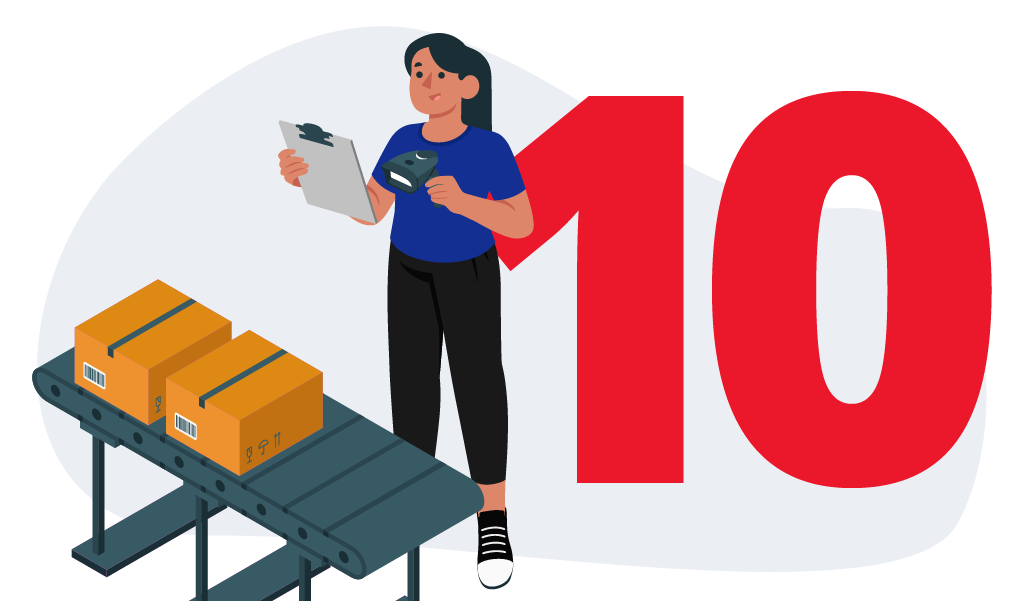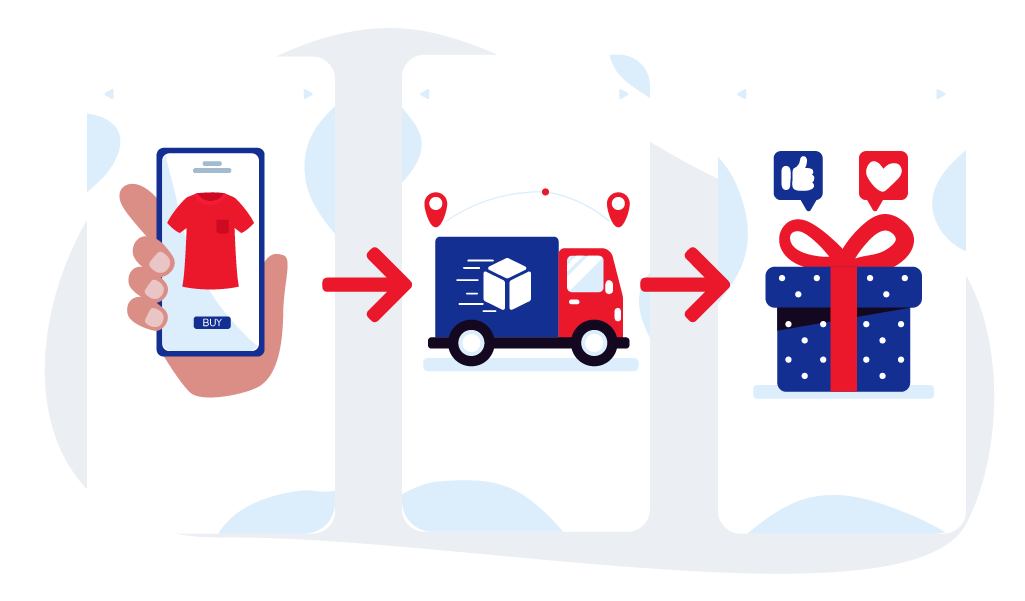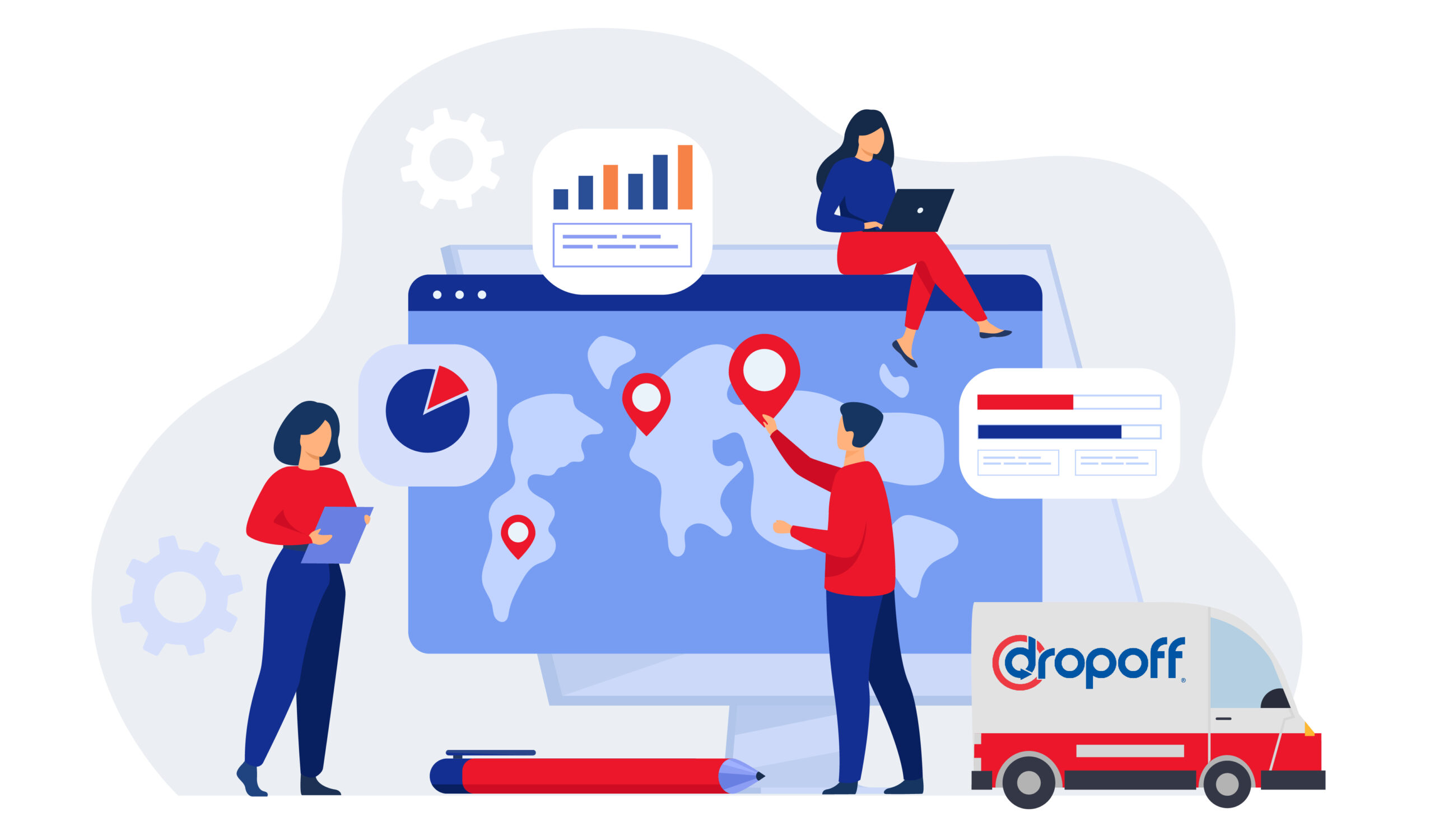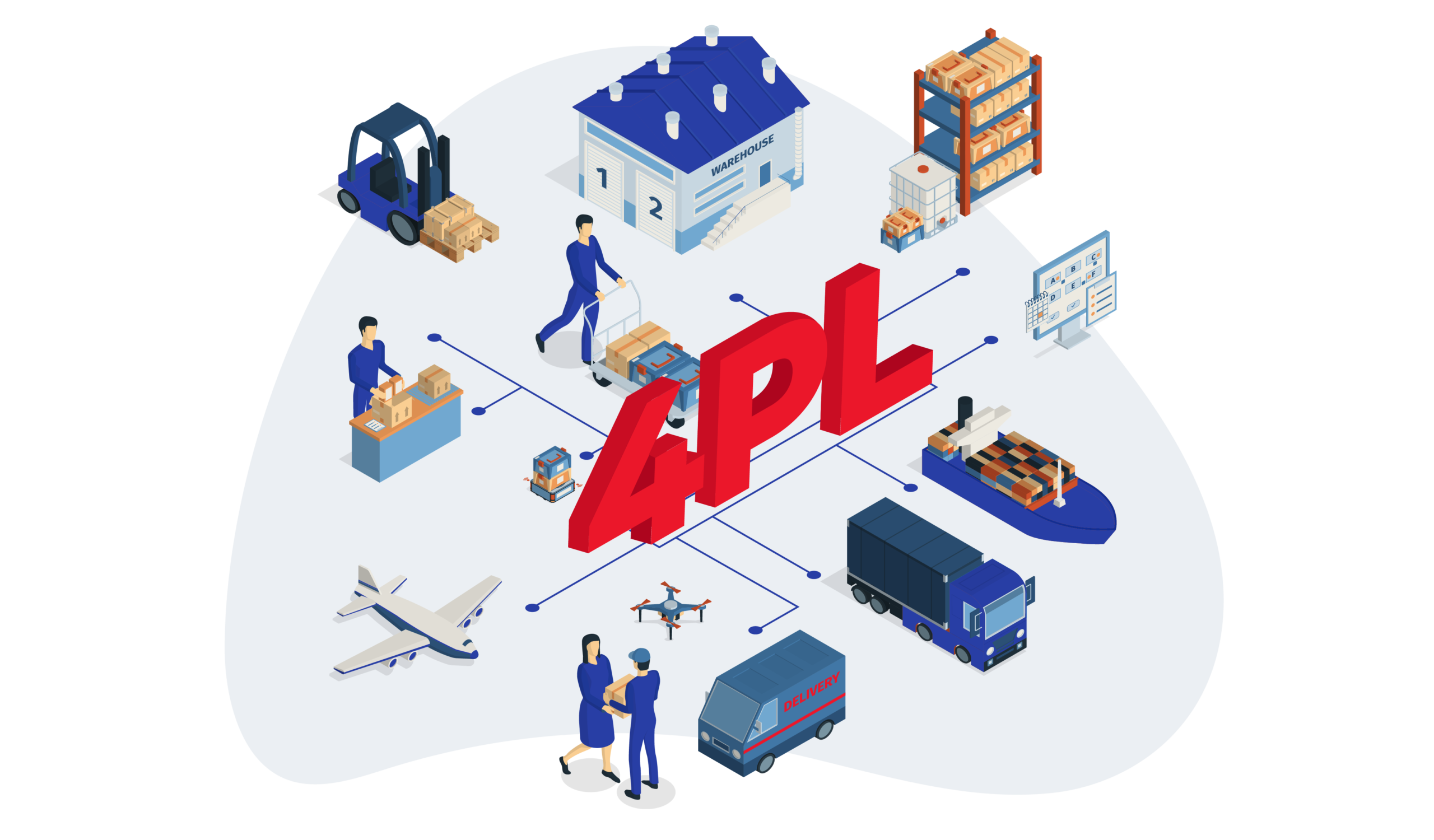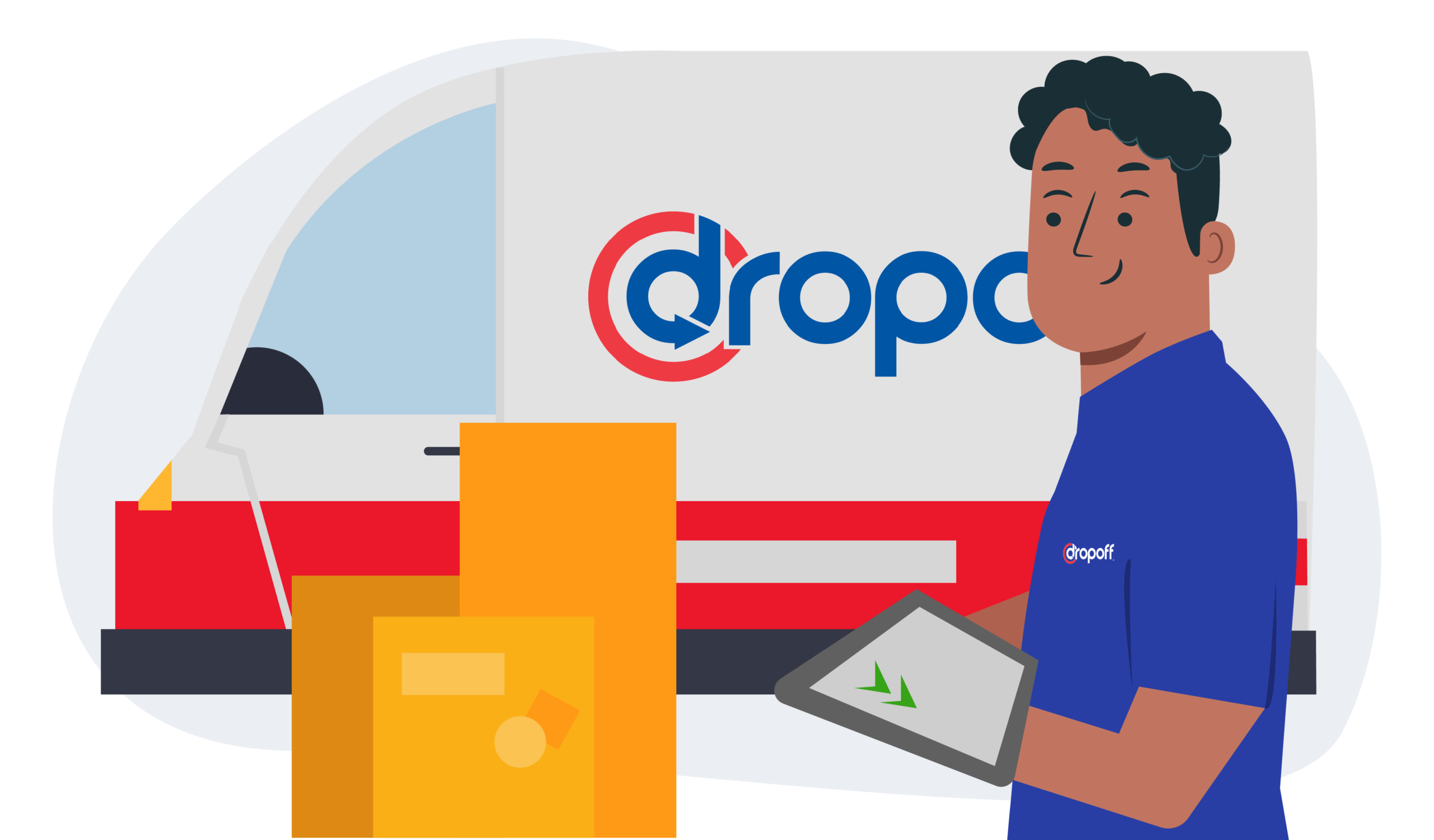A Breakdown of Last-Mile Delivery Costs and How to Reduce Them
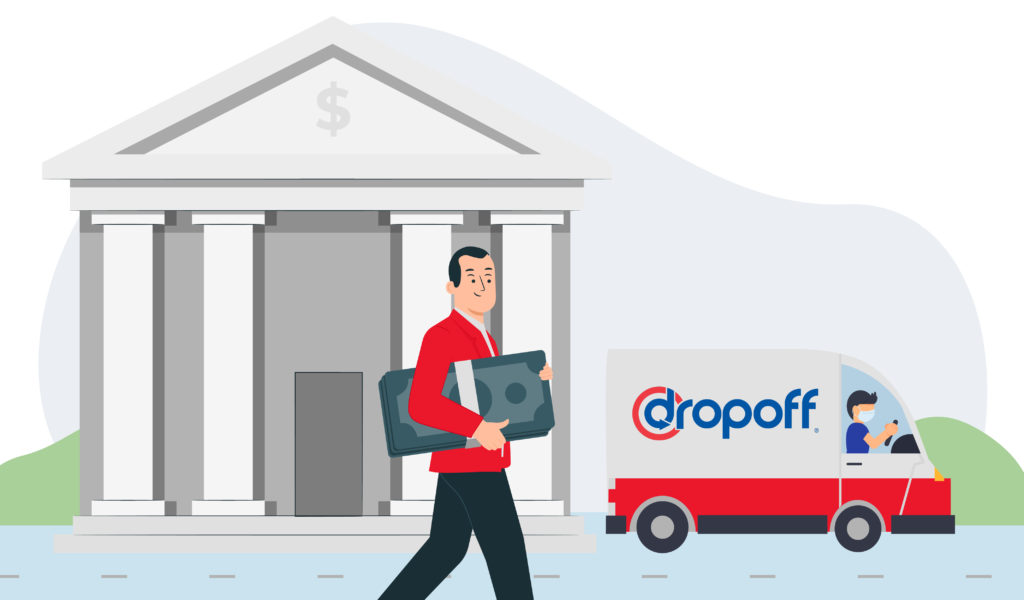
Last-mile delivery is one of the most critical aspects of e-commerce. Goods are delivered from a transportation or fulfillment center to the customer’s doorstep. When done correctly, businesses win customers’ hearts. However, last-mile delivery can get expensive, so it is essential to understand last-mile delivery costs.
This blog post will discuss the factors that affect the operational costs of last-mile delivery and offer some tips for reducing them.
What Is Last Mile Delivery?
Last-mile delivery refers to the final leg of the delivery process when a package is transported from a distribution hub to the customer’s doorstep. The goal is to do it as quickly, accurately, and affordably as possible.
To give you a better picture of how important (and expensive) last-mile delivery is, it accounts for more than 53% of the total shipping costs. That’s why optimizing the process is crucial! Inefficiencies will quickly lead to sky-high fees that cut into business profits.
The average cost per last-mile delivery in 2018 was $10, with the last-mile delivery market size estimated to reach $424.3 billion in 2030.
Unless managed well, the factors driving these costs will be hard to control. So before we examine the cost factors, let’s look at the last-mile delivery issue.
What Is the Last Mile Delivery Issue?
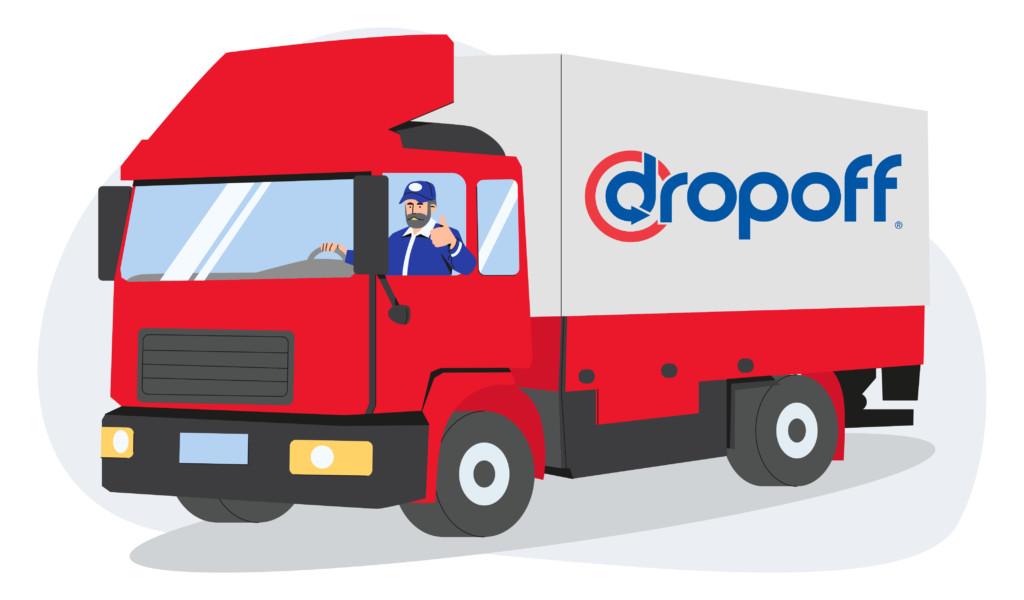
The last-mile delivery problem is a challenge that has long plagued many businesses. The issue is that the last mile is usually the most expensive part of the process.
Right off the bat, it is a tricky process because there are many stops and unique routes during delivery. You may even have to offer inside delivery for some products. These steps mean more time on the road and a massive fleet of delivery vehicles and drivers.
How Much Does Last-Mile Delivery Cost?
Before we give you the last-mile delivery cost breakdown, here are a few interesting statistics:
- Three-fourths of customers will spend more and be loyal to brands that offer an excellent last-mile experience. (Capgemini)
- The last mile accounts for 53% of total shipping costs. (Insider Intelligence)
- Last-mile delivery services account for 41% of all supply chain costs worldwide. (Statista)
- The average last mile cost per delivery for a small package to a high-density area is $10. The average last-mile cost per delivery for a large package to a low-density area is $50. (SupplyChainDrive)
- Most delivery drivers earn $16 to $24 per hour. (Salary.com)
- If you do not optimize how much it costs to deliver your product and there is a sudden increase in online sales, your profits could decrease by 26% over three years. (Leigh-David)
Breaking Down Last-Mile Delivery Costs
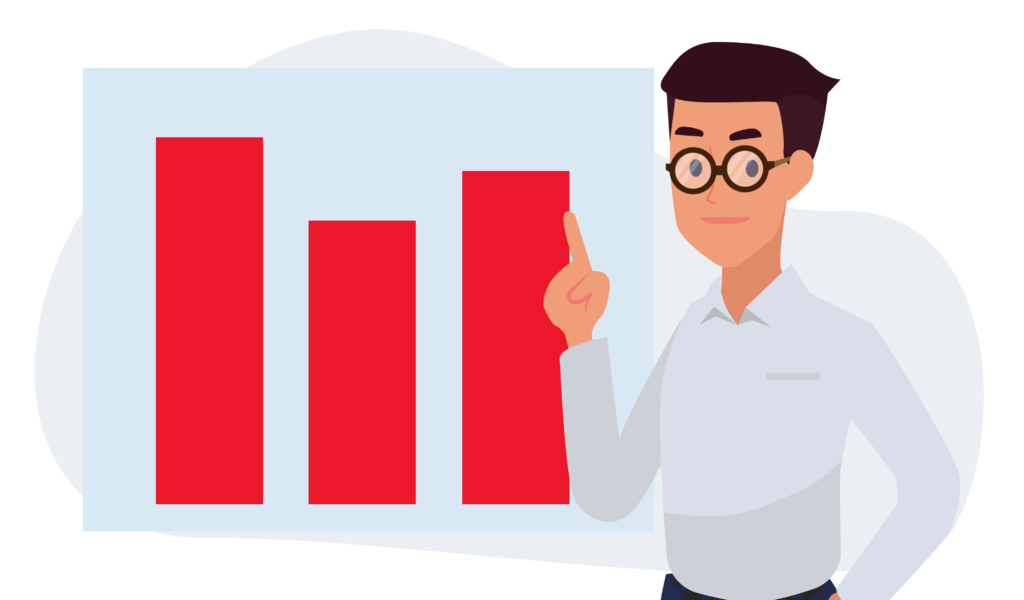
As we show you the cost breakdown for last-mile delivery, there are six things to consider:
- Labor Cost
- Fuel Cost
- Delivery Equipment Cost
- Delivery Management Software Cost
- Reverse Logistics Costs
- Miscellaneous Costs
1. Labor Costs (50%)
Labor costs account for around 50 percent of last-mile delivery expenses. Out of all the labor costs, couriers are the most expensive. They play an important role in supply chain and logistics operations, which is why businesses are willing to spend so much on them.
Additional data from the United States Bureau of Labor showed that the wage rate of delivery truck drivers ranges between $9.43 to $29.39 per hour, with an average hourly rate of $15.12. Likewise, local delivery couriers average $16.74 per hour. The costs are higher when businesses offer express delivery teams, which charge around $25.10 per hour.
2. Fuel Costs (10%)
The fuel bill accounts for 10 percent of last-mile delivery expenses. It might seem like a tiny percentage increase, but businesses can certainly feel the pinch. Take, for example, Amazon’s change of prime membership prices in 2018. Due to rising fuel costs, the eCommerce giant had to increase prime membership prices from $99 to $119.
Fuel costs also significantly peak when businesses grow since extra fuel is required to cover more geographic markets. As fuel prices increase, so do delivery costs. Simply put, fuel is volatile and difficult to predict.
The growing popularity of next-day and same-day delivery hasn’t helped either. More retailers are offering these services without properly planning a good last-mile delivery business model to support them.
As a result, drivers go out on delivery runs with only one or two parcels or packages at a time. This is wasteful in terms of fuel consumption. Not to mention how much more carbon emissions it produces.
Here’s everything you need to know about last-mile fulfillment.
A. Idling and Downtime
Driving in cities is a challenge. There are plenty of vehicles, unfamiliar streets, and traffic lights. Hence, drivers often find themselves idling more than they’d like. And while idling may not seem like a big deal, it significantly affects fuel consumption.
Delivery trucks use an average of 0.84 gallons of fuel per hour when idling, which quickly adds up over time.
B. Out-of-Route Miles
Drivers tend to lose track of their dispatchers’ route plans, given the high number of individual stops they make. Especially when the routes aren’t easy to refer back to. Unfortunately, this increases mileage as drivers take detours or make mistakes.
Out-of-route miles usually account for 10 percent of the delivery fleet’s mileage. This is a significant problem for shippers, who pay more for fuel and labor costs.
3. Delivery Equipment Costs (10%)
Delivery equipment costs account for 10 percent of last-mile delivery expenses. That’s because you need the right equipment to deliver a product safely to the customer’s doorstep. For instance, a food delivery business will need coolers, freeze-dried ice, crates, and more to serve fresh food. And that doesn’t even include packaging costs!
Some deliveries need special arrangements, like a vaccine that needs a temperature-controlled environment. These necessities add up, making delivery equipment expensive for last-mile delivery services.
4. Delivery Management Software Costs (10%)
It’s no secret that technology is a significant expense for businesses. But it doesn’t have to be a burden. The key is ensuring your technology spending is an investment in future cost reductions.
Delivery management software will get costly if not planned and optimized. It accounts for 10 percent of the total cost of last-mile delivery.
Take, for example, an Artificial Intelligence (AI)-based feature of an eCommerce app that automatically assigns orders to delivery drivers nearest to the location. Integration of such technology will come at a high cost.
Aside from automatic assignment and dispatching, these solutions help optimize last-mile delivery routes, which lets companies cut down on major delivery-related expenses.
Check out our guide on everything you need to know about omnichannel third-party logistics.
5. Reverse Logistics Costs (10%)
Returns and failed deliveries are both costly for e-commerce businesses.
Returns mean the company has to spend money for the product to return to the warehouse. Then they have to spend more money storing the product. Failed deliveries happen when the delivery driver has to return to the same recipient to ensure the proper delivery of the package.
The company will likely have to pay twice for the same product. These expenses negatively affect a company’s bottom line.
6. Miscellaneous Costs (10%)
In addition to labor, fuel, software, and equipment costs, there are unexpected expenses, such as replacement costs, rescheduling costs, and vehicle maintenance expenses.
Why Is Last-Mile Delivery So Expensive?

The following are several reasons why last-mile delivery is costly.
1. High Customer Expectations
Technology is constantly changing, and businesses have to evolve with it if they want to stay competitive.
For example, the rise of the Internet of Things (IoT) and 5G networks has led to customers demanding more real-time tracking of their deliveries. Hence, businesses must invest in big technology and infrastructure to create those features.
2. Free Shipping Options
Today, free shipping has become the norm in online shopping. And while it’s great for businesses to offer this perk to their customers, it is also expensive. Managing the last-mile delivery budget is challenging when companies bear the shipping cost.
3. Delivery-Related Issues
Failed deliveries and errors are too common, leading to additional costs. Whether it’s product replacements, returns, or failure of delivery attempts, the cost of last-mile delivery is constantly increasing.
7 Tips on How to Reduce Last-Mile Delivery Costs
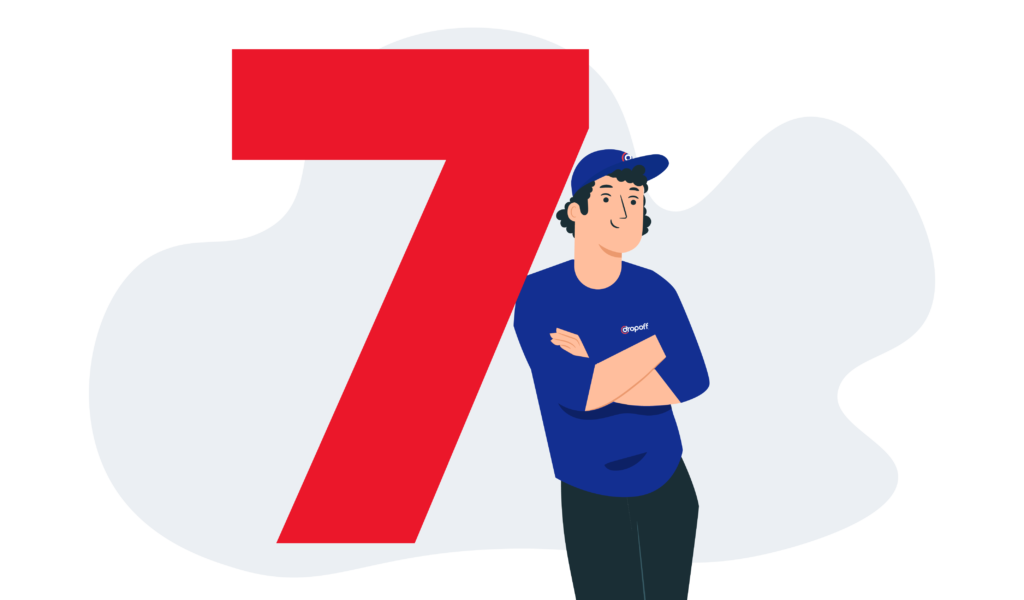
“One way businesses can reduce cash flow pressures is by looking for ways to cut costs. It involves negotiating better rates with suppliers, cutting down on labor costs, or finding more efficient ways to operate.”
Catherine Schwartz, Finance Editor of Crediful
Here are practical ways you can implement in your business to reduce last-mile delivery costs.
1. Plan Ahead and Understand Your Needs
One of the best ways to reduce costs in last-mile logistics is to plan. Understand your business’s cash flow needs and ensure that you have the funds available to cover these needs, especially during peak periods.
“The best way to manage any cash flow pressure is to plan for it by having a buffer in your business checking account or line of credit. This will help you cover unexpected costs and keep your business running smoothly.”
Andrew Gonzales, President of Business Loans
Let’s take a closer look at planning by determining the speed of delivery.
A. Determine the Speed of Delivery
It’s essential to understand the urgency of each delivery. It will help you prioritize and make the work management process easier. For businesses that require time-bound deliveries, like food, flowers, and groceries, use same-day delivery. The customer will receive the package while it’s fresh for consumption or use.
2. Optimize Routing and Dispatching
Optimizing the loading and dispatching process will make the delivery process faster.
Here’s how:
- Make a list of the orders from most urgent to least urgent.
- Download the orders onto the delivery vehicle according to the list.
- Keep the orders delivered to the nearest locations close to the door.
- Give the list to the delivery driver so they can deliver the correct packages to the right places.
Loading the parcels properly will reduce any chance of chaos. Once the loading is complete, the management team should focus on finding the most efficient routes. Choosing a multi-stop route to make multiple deliveries will be more efficient than making one trip with all the items. Ensure you update the route with real-time ETA information to avoid traffic delays.
A. Use AI-Powered Route Planning
Services that use intelligent software to automate route planning are a game-changer for companies that need to plan multi-stop routes.
These smart algorithms quickly map out the most efficient routes using data points such as distance, time, location, driver capacity, and traffic.
Such software will help save time and money by eliminating inefficient routes and avoiding costly delays.
Moreover, with highly efficient delivery routes, companies can dispatch delivery tasks within seconds, further improving efficiency and helping to keep costs down.
In today’s competitive business landscape, anything giving a company an edge is worth considering. And taking advantage of intelligent routing software is certainly one way to do that.
Related: 9 Must-Have Features In Last-Mile Delivery Solutions
B. Use Automated Dispatching
In the old days, when a delivery truck got behind schedule, a human dispatcher would contact the driver directly to adjust the route. A time-consuming process that often led to errors. Today, tech-powered platforms do this automatically and immediately update routes.
The application unifies a company’s fleet under a single system, which makes dispatching a breeze and reduces the high costs of last-mile deliveries.
3. Use Delivery Optimization Software
Benefits of last-mile delivery software include:
- Record of vehicle maintenance costs
- Calculation of supply chain costs
- Customer feedback
- Online payments
- Management of delivery fleet
- Increased delivery efficiency
- Managing high-density delivery
- Reduced rescheduling costs
The last-mile delivery optimization software is more cost-effective and likely to improve the customer experience.
When it comes to receiving packages, many customers value convenience over speed. A recent study found that 73% of customers said that a convenient time slot for delivery is more important than fast delivery. This is because people’s schedules are unpredictable, and they may not be available to receive a package when it is delivered.
As a result, they may have to waste time picking up the package from a delivery location or waiting for another delivery attempt. For businesses, this leads to increased last-mile delivery costs as drivers waste time making unsuccessful attempts or waiting for customers to show up.
Your business should offer multiple shipping options that include same-day and next-day delivery. Customers will have more freedom in choosing the option that best fits their schedule.
4. Offer More Flexibility to The Customer
No matter what they sell, any business needs satisfied customers to succeed. If customers are unhappy with their purchase or service, they likely won’t recommend your company.
The key is to offer more convenience. This may be in the form of real-time updates on their order or letting them track their package when it is out for delivery. As a result, the customer knows what is happening with their purchase and can ensure they are available to receive it.
To avoid failed deliveries, give customers a clear way to track their packages and estimate their ETAs. You will improve your brand value and gain customers’ trust.
A. Offer Real-Time Delivery Tracking
Last-mile delivery tracking allows companies to track the location of their delivery vehicles in real time. This visibility shows customers where their package is at all times and solves any internal delivery issues faced by the company.
Communicating critical information to guide the delivery fleet efficiently would help avoid delays due to traffic or weather conditions. With real-time tracking, companies can automatically provide the ETA to customers via web or mobile applications.
Companies can even monitor the efficiency and performance of drivers.
5. Offer Proof of Delivery
A company should be able to maintain proper records of their dispatch and delivery. This includes proof of the goods’ condition, the customer’s non-availability status, and payment details.
These proofs are electronically captured through notes, pictures, or videos and uploaded immediately into the system. Having the ability to maintain data in real time will help in resolving customer queries quickly.
Electronic proofs also eliminate unnecessary paperwork and reduce physical storage space in an office.
6. Do Your Research and Negotiate Better Rates
Always try and negotiate better rates with your suppliers. This could involve asking for longer payment terms or exploring bulk discount opportunities.
Remember that you don’t have to accept the first offer. If you feel like getting a better deal, don’t hesitate to try and negotiate.
While it may be daunting to haggle with suppliers, it’s always worth a shot. After all, even a tiny decrease in expenses will make a big difference to your bottom line.
“One way businesses can reduce cash flow pressures is by negotiating better terms with their suppliers. This could involve asking for longer payment terms or bulk discounts.”
Jeff Zhou, CEO of Fig Loans
7. Be Flexible
Sometimes, despite your best efforts in running your business, you still face cash flow pressures. It’s essential to be flexible to keep your business afloat.
For example, if you’re regularly experiencing cash flow shortages, you should re-evaluate your pricing strategy or delivery methods. Alternatively, if you find that you have extra cash, you could use this money to invest in new vehicles or technology.
No matter what, it’s essential to adapt and make changes as needed to manage your cash flow better.
The Overall Effect of Decreased Last-Mile Delivery Costs on Your Business
The overall effect of last-mile delivery costs on a business can be significant.
With lower delivery costs, businesses have more room to allocate toward marketing efforts. An increased marketing budget will lead to higher brand awareness and customer acquisition.
In addition, businesses may also choose to pass on some of the cost savings to end customers in the form of lower prices. This makes the company more competitive and attractive to potential customers.
Finally, lower delivery costs will also lead to more efficient operations as businesses look to streamline their supply chain and minimize waste.
Real-World Examples of Businesses That Have Mastered Last-Mile Logistics
Let’s take a closer look at some real examples of businesses that have mastered last-mile logistics.
Eldum Rétt – Food Delivery Service
Eldum rétt, a meal kit delivery company, based in Iceland, was having trouble with last-mile delivery when their business began to scale and receive more than 1,000 orders per week.
They tried using a combination of manual transportation dispatching and GPS tracking, but it didn’t work. It took too much time and was not scalable.
OptimoRoute has allowed Eldum rétt to quickly process thousands of orders at a time while also considering service areas, delivery windows, vehicle capacities, and more.
“A supplier error meant there were a whole lot of deliveries that went out one day with the wrong amount of ingredients. We realized the mistake and had to reoptimize really fast, prepare the replacement products and the drivers, and within a day, we delivered the correct amount to all customers that had been affected. OptimoRoute lets us be this responsive and flexible.”
Kristófer Leifsson, Founder, Eldum rétt
Evolution Rx – Pharmacy Delivery Service
Based in Houston, Texas, Evolution Rx is an independently owned pharmacy with a delivery area spanning more than 10,000 square miles.
With their old process, delivery drivers often had to call managers to confirm customer information or report on their order progress.
But with OptimoRoute’s mobile app, that is not a problem anymore. All the information is there, and they can quickly check the status of an order with a single click.
The Continual Increase of Last-Mile Delivery Costs in the Future
In the next few years, we can expect to find more innovative solutions to the last-mile delivery challenge. This will include using autonomous vehicles for local deliveries, partnering with local businesses to serve as “mini-fulfillment centers,” and offering subscription-based delivery services.
Last-mile delivery costs will likely continue to rise. The continued growth of e-commerce and the increasing demand for same-day and next-day delivery options will drive this.
Speaking of delivery options, learn more about door-to-door delivery.
How Dropoff Can Help with Last-Mile Delivery
Delivering packages on time and in good condition is crucial for any business. But it is challenging to coordinate multiple deliveries while keeping track of each package.
If you’re looking for a reliable and affordable delivery solution for your business, look no further than Dropoff. We offer a variety of solutions ready to be customized to fit your specific needs. From same-day delivery to white-glove services, we have a solution that will work for you.
With our easy-to-use software, you can place and track orders in real-time, keeping tabs on your deliveries from pick-up to dropoff. Plus, our trackable digital chain of custody provides peace of mind and compliance documentation.
Our couriers will verify package delivery via photo, signature, email, text, or any courier action you prefer.
Talk with a Dropoff expert today to streamline your last-mile delivery operations.
FAQs on Last-Mile Delivery
Last-mile delivery refers to the final leg of the delivery process when a package is transported from a distribution hub to the customer’s doorstep. The goal is to do it as quickly, accurately, and affordably as possible.
Here’s how to optimize delivery operations:
– Plan a workflow strategy in advance
– Keep records of deliveries
– Optimize route planning
– Prioritize customer experience
– Automate the business with an optimizing software
A delivery service’s strategies to make money and reduce costs are what make the service efficient. Giving priority to important orders so that more money is made and fewer deliveries are failed helps to keep the delivery service running smoothly.
Last-mile is the final step in getting a package to the customer. The package is sent from the distribution hub or warehouse to the delivery location. This could be someone’s house, a business, or an e-commerce lockbox.
The charges for making the last mile successful are called last-mile delivery costs. These costs are high and play a vital role in the success of the last mile.
The challenges of last-mile delivery are:
– Time-sensitive packages
– Route planning challenges
– Failed Deliveries
– High fuel costs

